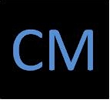Poll Everywhere Buzz
See what people have to say about us
Chiasson said the open-ended live comment feed was a huge audience favorite. “It was very interesting for all of the participants to gauge how their fellow viewers felt about the debate and the election in general,” she said. What’s more, she’s now a fan of digital polling. “We had planned to use slips of paper that would have been collected and tallied. Honestly, I can’t imagine using the paper method ever again!
As the benefits of clickers catch on, the clickers themselves, which require a base system that costs about $250 to record answers and produce real-time graphs, may face an uncertain future. Companies are plotting their obsolescence. Software from Poll Everywhere, for example, allows participants to text responses from their cellphones.
The aim here is ease of use. "We're trying to build a service where meeting planners won't need any training," says Vyduna. "We don't want people to need online courses to learn our software."
As long as Wi-Fi is available, responses to Poll Everywhere surveys also can be sent in by laptops, iPads and iPod Touches. And answers can be tweeted and still come straight into the presenter's PowerPoint slides in seconds (there's a demo here: bit.ly/hM005m).
As American Idol's success has shown, people love to vote -- and to see how others have voted. But why limit electronic polling to TV land? Why can't any audience anywhere be polled, whenever, with the results projected for all to see? Now, a service called Poll Everywhere makes it pretty simple to offer this...
We also had to trust they would use their mobile learning devices (i.e. cell phones) responsibly as a tool for learning in certain classes using free programs such as Poll Everywhere. The result has been an increase in student engagement, enthusiasm towards learning, and mutual respect amongst students and staff.
Poll Everywhere turns cell phones into student responders—something most schools can't afford—that teachers can use to gather information about content mastery in their class... Considering how important efficiently collecting data has become in today's classroom—and that 75 percent of all students with cell phones have unlimited texting plans—services like Poll Everywhere should be an instant hit in most schools.
I've seen another teacher use Poll Everywhere software with the students to check on their understanding during a lecture. The teacher posed a math problem, the students texted their replies to the Poll Everywhere site, and a pie chart showing the distribution of answers was instantly projected at the front of the class, giving the teacher a chance to clear up any misconceptions before moving on.
Unlike conventional systems using dedicated hardware, Poll Everywhere is not confined to multiple-choice based polling. Instead, it leverages the full potential of the SMS format and, when so configured, allows respondents to reply in full free-text sentences. This is a unique feature of this technology. Allowing students to answer unconstrained in their own language can give an instructor valuable insight into how students are understanding and applying course concepts.
Poll Everywhere, a Y Combinator company that launched last Fall, is a service that allows presenters to sidestep these obstacles [proprietary devices] by taking polls with mobile phones. Instead of using a proprietary device, users simply send a SMS message to a specified number. This data can then be displayed on a dynamic PowerPoint slide, allowing users to watch the results change on the fly.
Poll Everywhere really shines when you’re presenting to an audience, are on the move, or just want to poll your Twitter followers. The Poll Everywhere widget can be downloaded as a PowerPoint Slide and will live-update as each user votes. If you want to find out more about your audience, just ask them to whip out their cell phones and text to 22333 their desired response.

The live interactive text messaging polling service had people captivated and engaged as the audience eagerly watched the percentages on the bar chart fluctuate as votes poured in from phones to determine the crowd favorite and who would win $10,000.

















